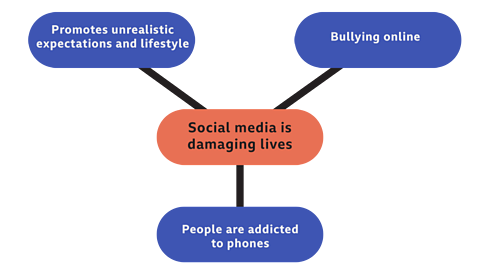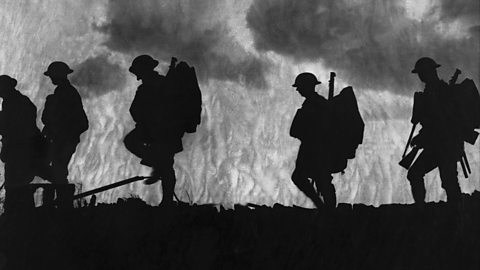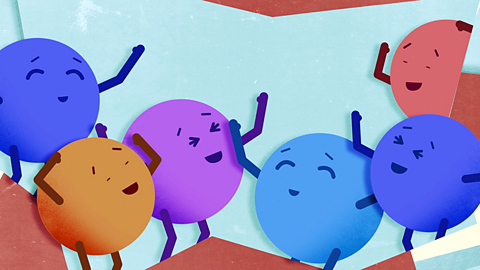Did you know?
Spoken word poetry is very popular and there are a number of well-known spoken word poets.
As well as winning poetry awards, spoken word poet Kae Tempest has also been nominated for music awards including a Brit Award and the Mercury Music Prize.
It took poet Hollie McNish a year of attending spoken word poetry nights before she felt brave enough to speak herself. Now videos of McNishâs home-recorded poems have received millions of views.
Introduction to slam and spoken word poetry
Slam poetry, or spoken word poetry, is an art form that allows the poet to get across their point of view and express their emotions using the power of words, rhythm and rhyme.
Key learning points
- What is slam poetry used for?
- How to write slam poetry
- How to perform slam poetry
Video about slam and spoken word poetry
A video about slam poetry, why it is used and how to win at slam poetry competitions
I pull words from a page
To enthral and engage.
From excitement to sadness, passion to fear,
I will make it known that Iâve fought to be here
at this celebration of human connection
I inspire through intonation and inflexionâŠ
And
Sometimes
even ⊠a ⊠deliberate ⊠hesitation.
But spoken word is more than sounds and silence:
itâs thoughts and feelings; vocal protest and non-violence;
words in a whirlwind winning hearts and minds, your feelings and your thinking.
Because a âpoetry slamâ is a competition
where each poet enrolls on a mission
to dazzle the crowd.
Say it loud: we're word magicians,
weaving a spell of rhythm and sound.
Stand proud: as verbal musicians,
We enrapture a room in our compositions.
So letâs make the most of this moment of epic, poetic projection
Because itâs more â than mere modulation, intonation and inflexion:
Use your hands, your face, your posture too, hold nothing back
Your self-expression will whip the crowd up in your backing track:
The gasping, cheering, clapping, yelling, laughter,
from floor to rafter
Until we're all together in it
Poet and audience, performing to the limit
Thatâs a poetry slam.
And thatâs how to win it.
What is slam poetry?
The term âslam poetryâ was coined in the 1980s in Chicago, where jazz clubs began hosting spoken word contests involving five poets who would âface offâ against one another.
Currently, there are European and World Cup slam competitions that are entered by spoken word poets from all over the world.
What does slam poetry sound like?
Slam poetry is also called spoken word poetry â and the clue is in the names. The idea is that the human voice becomes an instrument and through that instrument an idea is articulated using volume, pitch, accents, sounds, pace and rhyme.
Some spoken word poets use their bodies as well to add sounds such as tapping their feet, or patting parts of their body to make a human drum. Others speak in different voices and âplayâ different parts.
Spoken word poets often use rhythms from rap, hip-hop, folk music, reggae, dub and jazz as well as traditional story-telling and improvisation in their performances.
Whatever the choices, spoken word poets have one thing in common â their aim to communicate a powerful point of view.
Politics and protest
Spoken word poetry works best when the topic is something that evokes, or creates, emotions in the listeners.
This happens when you, as the poet, feel strongly about the topic.
If you are angry, the poem should express that, and the listeners will feel it. If you are saddened, the poem should express that, and again the listeners will feel that too.
Often the most powerful topics to bring about such strong emotions are linked to politics and protest.
When we feel strongly about something, especially when it involves inequality or injustice, then we can stand up and express ourselves with passion and drive.
Rhyme in spoken word poetry
Unlike other closed forms of poetry, spoken word poetry doesnât have to rhyme.
In spoken word poetry, often itâs better to have the rhyme in unexpected and different places to add emphasis to the key points you want to get across.
assonance The rhyming of vowel sounds in successive words. doesnât need to happen at the end of lines â it can happen within and throughout the poem. For example:
I sit back to relax
but the fact that youâre back
means I feel
like Iâm trapped and Iâm under attack
If you read the above aloud you will hear the assonance in a hard âaâ sound. Also, in the middle of the line, the shift to âmeans I feelâ brings an âeâ sound into the line, which adds a new rhythm.
Half-rhyme is really helpful in spoken word poetry. Sometimes youâll want to use a phrase or word that isnât easy to rhyme directly. Half-rhyme or near-rhymes allow you to get past this problem. For example:
- Counter â about her
- Suspect â enough left
- Belief â we grieve

True or false?
The words in bold use assonance with the vowel sound âerâ or âiâ
But what they donât know
Is Iâm about to go to the latest rehearsal
For a Broadway show
Where Iâm first on after the curtain
Bursting into the theatre
Certain of a standing ovation
But to them Iâm just a
Joke in the making.
Answer: True. The words in bold use assonance with the vowel sound âerâ or âiâ
Rhythm in spoken word poetry
- Adding assonance and mixing up when you change the vowel sound will automatically provide a rhythm.
- Repetition is also a big part of rhythm â having a key line, word, image or sound that you repeat gives a rhythm to the poem's structure.
- Alliteration can also add rhythm to your poetry. Using the same letter or sound at the start of numerous words in a row or in a space of time creates a rhythm of its own.
Plosives
Plosive sounds are âhardâ sounds that involve forcing air out of your mouth and usually involve putting your lips together, or closing part of your mouth.
Plosives include âtâ, âpâ, âbâ, âdâ, and the hard âcâ and âgâ sounds. Plosive words can be used to create a forceful tone or for emphasis.
Softer sounds like âsâ or a soft âcâ (like in certain) can be soothing or sometimes even sinister.

True or false?
The words in bold are examples of hard plosive sounds.
When I get on the bus
There are titters and cackles
From the pretty girls on the back row
Who criticise my clothes
And giggle at my gait.
Answer: True. The words in bold are examples of hard plosive sounds.
Pace and volume in slam poetry
Pace
Think about which parts of your poem you want to speed up or slow down.
- Speeding up a moment could give it a sense of panic, anger, or excitement.
- Slowing down a moment could give it a sense of frustration, boredom, or sadness.
Volume
- Speaking more loudly will help your audience understand your point of view very clearly.
- Speaking more softly will make the audience really listen â this is when you can deliver a killer line or your main âsecretâ that you want them to know. Deliver it quietly, almost in a whisper.
- Starting with volume is often most effective.
- Sometimes ending on a quiet tone can be very effective.
Gesture and speaking clearly in slam poetry
Use gesture and facial expressions to physically show the tone and meaning behind your words. Your body is just as important as your voice when you are performing.
If your tone is shy, your movements should be small and shy. If youâre being loud and dramatic, your movements should be big and dramatic. If youâre being sarcastic, use your facial expressions or hand gestures to make sure the audience understand this.
Annunciation
Annunciating, or saying every word clearly, is important in spoken word poetry because every word adds to the sound and meaning of the poem.
Often spoken word poetry involves a flow of emotion which can mean words are spoken fast and passionately. If the words are unclear, the audience will not be able to understand the meaning and much of the impact of the poem will be lost.
Mind-mapping to plan a slam poem
- Step 1 â Choose a topic that you are passionate about.
- Make sure the topic is something you care about; this will give power to your ideas and your point of view.
- Step 2 â Write the gateway line.
- The gateway line is the central idea in your poem â it tells the listeners your main point of view.
- Starting with this gives you a clear purpose and you can spend the rest of the poem expanding on that one point.
- Step 3 â Mind mapping
- Creating a mind map can really help organise your ideas and your argument and see which ideas link to which in order to organise your poem.
Here is an example:

Test your knowledge
Play Bitesize secondary games. gamePlay Bitesize secondary games
Have fun playing science, maths, history, geography and language games.

More on Writing poetry
Find out more by working through a topic
- count3 of 3

- count1 of 3
